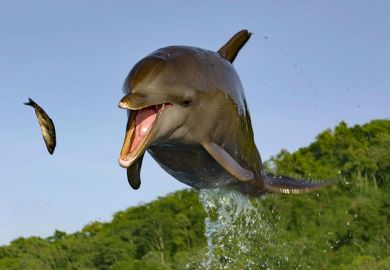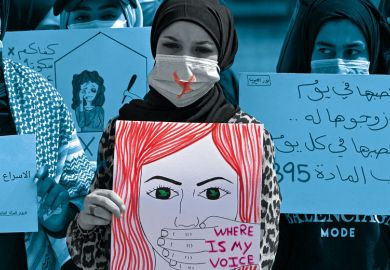In January 1935, W. B. Yeats was seriously ill in Dublin. Afflicted with chronic lung disease, heart trouble and acute hypertension, the 69-year-old poet was coughing up blood. He was being nursed by his wife, George, who was also acting, as usual, as his typist, secretary, editor and (in effect) sole parent to their two children. The previous April, Yeats had undergone the Steinach operation for sexual rejuvenation - not an infusion of monkey glands, as Dublin wits liked to believe, but a unilateral vasectomy. It had not cured his impotence. Nevertheless, he was attempting to pursue an affair with Margot Ruddock, a -year-old actress in London - of whom George pretended to know nothing. As she wrote to his doctor, Oliver St John Gogarty: "I would rather he died in happiness than in invalidism. He may not have told you of all his past 18 months' activities. One of them is that he has been very much in love with a woman in London. I tell you this that you may understand why I am most anxious that he should not be tied to an unnecessary invalidism."
The note of ruthless self-effacement is characteristic of the woman who, when she joined the order of the Golden Dawn in 1914, chose to call herself " Nemo Sciat " - "Let No Man Know" - often abbreviated to " Nemo ". And yet, as Ann Saddlemyer's meticulously researched biography makes clear, George Yeats was no doormat.
Georgie Hyde Lees first met Yeats in 1911, when she was 19 and he was 45.
There was money on both sides of her family, but her parents' marriage was not happy. Her father, Gilbert (born in the same year as Yeats), succumbed to alcoholism, of which there was a long history in the family, and died, aged 44, in a drying-out clinic appropriately named Highshot House. She mourned him deeply. Years later she told Ottoline Morrell that she gave up attending seances after this because she "found the meagre communications one got so poor a substitute for the real and tangible thing that one longed for". She seems to have lived mostly with her mother, Nelly, in and around Kensington, and travelled extensively in Europe. By 1906 they had met Olivia Shakespear, the novelist who had relieved Yeats of his long-preserved virginity in 1896, and thus Olivia's younger brother Harry Tucker - whom Nelly married in February 1911. George became best friends with Olivia's daughter Dorothy, who would devote her life and fortune to the career of Ezra Pound.
During the six years between her first meeting with Yeats and their marriage in October 1917, George applied herself to a programme of occult and mystical studies that might have been expressly designed to prepare her for life with Yeats. Everyone in her mother's circle was engaged in some form of occultism, most of all Yeats himself, perhaps the most indefatigable seance-goer in Edwardian London. She taught herself French, German, Italian, Spanish and medieval Latin, steeping herself in the hermetic tradition and nurturing an entirely matter-of-fact belief in ghosts, spirits, poltergeists and prognostication - opting, as it were, for the full supernatural ticket.
Yet she cannot have been sure she would ever marry Yeats, who had transferred his long obsession with Maud Gonne to her daughter Iseult: 6ft tall, strikingly beautiful and chronically depressed. It was only after Iseult refused him that Yeats proposed to George. They married within weeks, and Yeats immediately sank into a brooding gloom, convinced that he had married the wrong woman.
George considered leaving him, but instead faked a spirit message assuring him he had done the right thing. Yeats cheered up instantly; then George, or so she would ever after insist, felt her hand seized as if "by a superior power". Thus began the automatic script that would run to thousands of pages over the next seven years, and shape the "system" that Yeats published (much against George's wishes) as A Vision. Though both Yeatses seem to have believed, quite sincerely, that discarnate spirits were at work, it is clear that George used the script to direct the course of their marriage, by - in the most dramatic instance - using it to time the conception of their children. In this, as Saddlemyer contends, she was always scrupulous; the spirits told Yeats that "the medium" wanted children only if he himself wished for them.
Drawing on a vast range of unpublished primary materials, Becoming George highlights the paradox of its subject's personality. From childhood onwards, her strength of character, intellectual independence and fearless self-sufficiency were apparent to everyone who knew her. But there was also a deep reserve; so deep that although Saddlemyer's account of her early life greatly extends the record, I am struck by how little we still know of Georgie Hyde Lees. The plates (many published here for the first time) suggest part of the reason: at 18, she looked like a mature woman in her late 30s: grave, experienced, inscrutable. Few of her early letters have survived, whereas she scrupulously preserved all of her husband's papers.
Thus she appears on stage, as it were, only after her marriage, which Becoming George chronicles in extraordinary domestic detail.
Readers familiar with previous biographies will, I suspect, end up liking George even more, and Willie, especially the "gland old man" of the last years in Dublin, a good deal less. Yet she loved him without illusion and missed him greatly after he died (she survived him by nearly 30 years).
Apart from her labours as medium, secretary and copy editor, George kept her husband alive to write the volumes - from The Winding Stair (1933) onwards - that many regard as his finest. Without her care, Yeats would not have survived the winter of 19 - the year in which, exhausted by nursing her entire family, she wrote despairingly to Lennox Robinson that "they could have jointly a nurse, a governess, a secretary and a housekeeper and all get on so much better". But mostly she coped, selflessly and efficiently, with the demands of the life she had chosen.
John Harwood is a full-time writer whose publications include Olivia Shakespear and W. B. Yeats .
Becoming George: The Life of Mrs W. B. Yeats
Author - Ann Saddlemyer
ISBN - 0 19 811232 7
Publisher - Oxford University Press
Price - £25.00
Pages - 808
Register to continue
Why register?
- Registration is free and only takes a moment
- Once registered, you can read 3 articles a month
- Sign up for our newsletter
Subscribe
Or subscribe for unlimited access to:
- Unlimited access to news, views, insights & reviews
- Digital editions
- Digital access to THE’s university and college rankings analysis
Already registered or a current subscriber? Login



